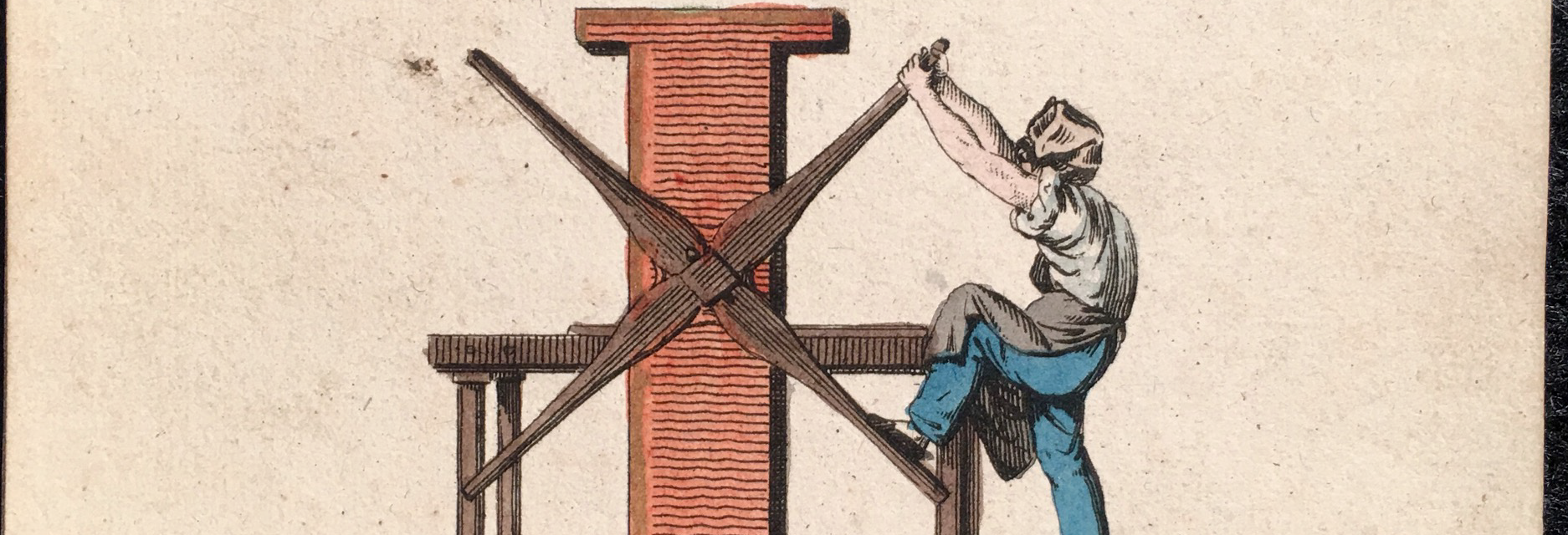The Updike Collection on the History of Printing
Providence Public Library’s collection of books on printing was begun in 1910 with the purchase of over a thousand duplicate books from the St. Bride Library in London. The purchase was made at the suggestion of Mr. Daniel Berkeley Updike of Boston, and he contributed generously to the fund drive that enabled the Library to make the purchase. Mr. Updike, who died in 1941, was the proprietor of the Merrymount Press and the author of the classic work Printing Types: Their History, Forms, and Use, first published in 1922. He bequeathed his personal collection of books on printing to the Library, and later several other gifts and purchases strengthened the collection.
Today the collection contains over 7,500 volumes, 600 letters and other manuscripts, hundreds of prints (mostly portraits of printers, typefounders, booksellers and publishers), much printed ephemera and some artifacts including three printing presses, a wooden type case, a set of punches and two sets of matrices for the Montallegro and Merrymount types which Mr. Updike commissioned for his own use.
The collection is particularly strong in early type specimen books. They date from the 16th century, and about 400 of them were printed before the 20th century. The collection is also strong in Mr. Updike’s own Merrymount Press, in books designed by Bruce Rogers, and in books printed by Giambattista Bodoni. Current collecting is focused on typography of Asia, India and Eastern Europe.
- Books: Search the online catalog
Approximately two-thirds of the Updike Collection books can be found in the Library’s online catalog. - Ephemera: Updike Ephemera Finding Aid
The Updike Collection holds thousands of individual pieces of ephemera produced by printers over the centuries. Many are not yet listed in the finding aid, so contact Special Collections to find out what else is available. - Manuscripts: The Daniel Berkeley Updike Correspondence
This is the personal correspondence of Daniel Berkeley Updike, dating from 1878 to his death in 1941. The collection includes letters between Updike and many of the major printers and type designers of the period. A finding aid has not yet been prepared, but a card catalog record for each letter exists in the Special Collections reading room. Contact Special Collections for more information.
The Updike Prize for Student Type Design
We hold an annual prize for student type designers, capped off by an award ceremony and guest lecture every autumn. Information about entering is available on the contest webpage.
The Updike Collection Online
- The Updike Collection of Book Trade Portraits (Coming soon to ProvLibDigital)
This online resource includes over 400 images of printers, booksellers, and other members of the book trades. The images were taken from a set of portraits mounted on paper and inserted into four large binders, with the title “Portraits of Printers & Booksellers” in gilt lettering on each spine. It is believed that the binders were purchased from the Chiswick Book Shop in June of 1960. Initial project supervision by Richard Ring. Metadata and scanning supplied by Robin Camille Davis, Janaya Kizzie and Zachary Lewis. A limited edition print featuring some of the Updike Collection portraits was produced in 2010 by Dan Wood and Katherine Cummings as part of the Tiny Showcase series. - Alonso Victor de Paredes, Institución y origen del arte de la imprenta
Alonso Victor de Paredes’s manual of printing, the Institución y origen del arte de la imprenta, y reglas generales para los componedores, has been described as “the first handbook on printing composed in a vulgar [i.e. non-Latin] language.” Although the title page provides no imprint, the book was likely printed in Madrid, sometime around 1680 (making it a predecessor to Joseph Moxon’s 1683 handbook). The Updike Collection copy was once in the personal collection of Daniel Berkeley Updike, and it is one of only a handful of copies now in existence. There is speculation that the book’s handwritten annotations were made by Paredes himself, planning revisions or corrections for a future edition.
Related Collections
- Manuscripts: Daniel Berkeley Updike Autograph Collection
The Updike Autograph Collection is a miscellany of letters and documents, most of general interest (rather than the history of printing).
